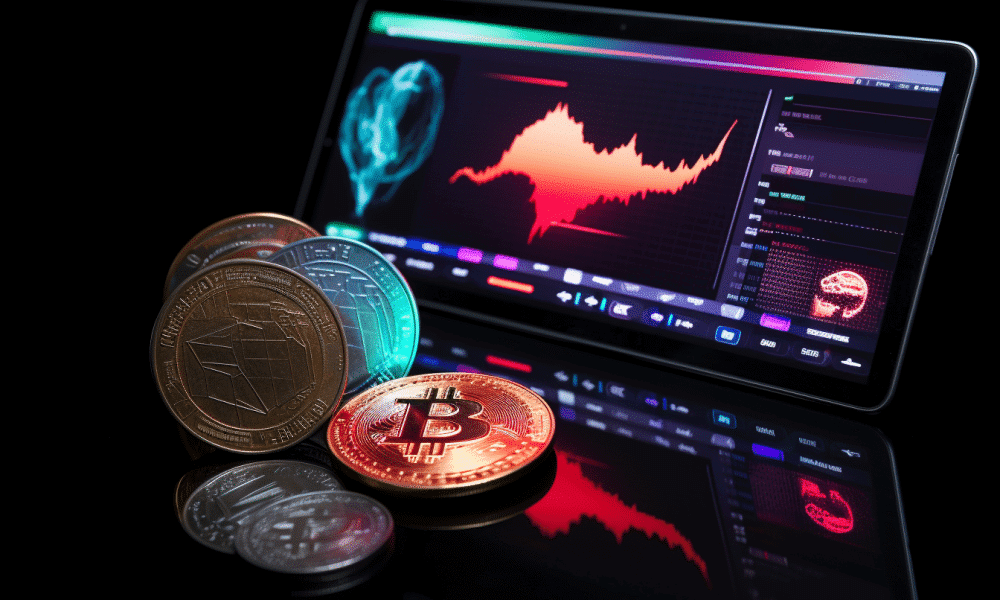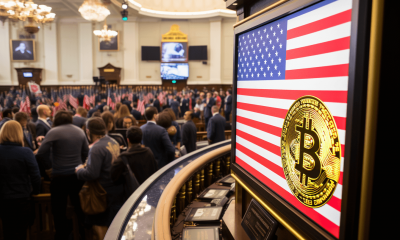Web 3.0
Is DLT Trading Legit? A Detailed Overview
Delve into the depths of DLT trading in this comprehensive guide. Discover if it’s a legit platform for your crypto ventures and make informed investment decisions in 2023.
Published
1 year agoon

Distributed Ledger Technology (DLT) has been hailed as the next significant leap in digital technology. This decentralized system has the potential to revolutionize various industries, from banking to retail, making transactions faster, more secure, and transparent. However, many traders often wonder: Is DLT trading legit?
Let’s delve into the world of DLT trading and understand its potential, challenges, and applications.
DLT: An introduction

Understanding DLT trading
DLT is commonly equated with blockchain technology. It’s a digital decentralized system designed to verify and record asset transactions. This technology makes the system more reliable as it exists in various locations simultaneously.
A distributed ledger consists of nodes that process and verify items. As they do this, DLTs create records of different items while reaching a consensus on their validity. This process makes the DLT ledger practically impossible to alter after the fact, thereby creating an “immutable” ledger.
Also Read: Top Fintech Trends to Check Out in 2023
What is DLT trading?
DLT trading, embodying the essence of DLT, metamorphoses the conventional trading landscape by facilitating the buying and selling of assets on decentralized platforms.
Unlike traditional platforms steered by a centralized authority, DLT platforms distribute control across a network of nodes, thereby significantly bolstering the security and transparency inherent in the trading process.
Here’s an exploration of the diverse spectrum of assets that can be traded on DLT platforms:
- Securities, such as stocks and bonds.
- Commodities, such as gold and oil.
- Digital assets, such as cryptocurrencies and non-fungible tokens (NFTs).
Also Read: Bitcoin Options Trading Guide and Step-by-Step Tutorial
Is DLT trading legit?
DLT trading is considered a legit and emerging field within the financial sector. While DLT trading is a legitimate endeavor, it is essential for participants to exercise caution and conduct due diligence when engaging in this space.
The cryptocurrency market, in particular, is known for its high volatility and susceptibility to fraudulent activities. Therefore, traders and investors should choose reputable exchanges, stay informed about regulatory developments, and implement robust security measures to ensure the legitimacy and safety of their DLT trading activities.
Reasons why DLT trading is considered legit
Here is a detailed overview of the reasons why DLT trading is considered legit. Take a look:
1. Mainstream embrace
Mainstream financial behemoths have discerned the value embedded in DLT, especially within the realm of permissioned chains.
Additionally, these chains promise to mitigate the inefficiencies ingrained in traditional settlement systems, heralding a new era of streamlined financial operations.
2. Regulatory fostering
Regions have exhibited an affinity towards DLT infrastructure on a global pedestal, forging alliances with industry stakeholders on pilot ventures and sandbox endeavors to test and gauge the technology.
For instance, the UK has plunged into active review of DLT, while Switzerland has unfolded regulatory green lights for DLT-driven stock exchange and central securities depository, marking milestones in the regulatory acceptance of DLT.
3. Operational upsides
DLT, with its decentralized essence, unfolds a suite of operational benefits encompassing resilience, reliability, and expedited, cost-effective operations.
Moreover, the decentralized architecture substantially trims down the likelihood of system failures, fostering a more robust trading environment.
Also Read: Is eToro Legit or Scam? Everything You Need to Know
Exploring if DLT trading is legit
4. Securities trading evolution
Platforms akin to Euroclear’s D-FMI, empowered by DLT, are pioneering the genesis, issuance, and settlement of fully digital international securities.
Additionally, this epitomizes DLT’s potential to morph the securities trading landscape, making it more agile and transparent.
5. Post-trade environment rejuvenation
DLT is perceived as a remedy to myriad challenges plaguing the post-trade milieu, aiding in trimming operating expenses for banking institutions. Furthermore, this transformation can lead to a more efficient and cost-effective post-trade process.
6. Benefits and challenges spectrum
DLT unfurls a plethora of benefits, including near-instantaneous settlement, diminished settlement risk, elevated transparency, and refined relationship management processes.
Conversely, it also poses challenges like counterparty issuance risk, potential market segmentation, and the transition turbulence from legacy systems. These factors further ensure that DLT trading is a legit option for traders.
How does DLT trading work?
Below is an elaborated depiction of how legit trading on DLT-based platforms typically operates:
1. Asset tokenization
In the realm of DLT platforms, assets such as stocks, bonds, and real estate, among others, undergo a process known as tokenization. Moreover, this process metamorphoses these assets into digital tokens on the blockchain, with each token symbolizing a share or a stake in the associated asset.
This digital representation not only facilitates ease of trading but also extends the possibility of fractional ownership, thus lowering the entry barriers for potential investors.
2. Trade initiation
Participants kickstart the trading process by crafting and forwarding orders through decentralized applications (dApps) or platforms engineered atop DLT networks.
This decentralized initiation fosters a trading ecosystem that is less reliant on intermediaries, thereby streamlining the trading process and potentially reducing associated costs.
3. Order matching
Emulating the conventional trading systems, orders on DLT-based platforms are paired based on set parameters like price and quantity. However, the distinctive feature of DLT allows this matching process to be orchestrated in a decentralized fashion through smart contracts or decentralized exchanges (DEXs), minimizing the reliance on central exchange authorities and enhancing the efficiency and transparency of the order-matching process.
4. Trade verification
Post-matching trades must have verification through the network’s consensus mechanism. This decentralized verification modus operandi assures that transactions are valid and have the consensus of a substantial portion of the network’s participants before inscription onto the ledger, thereby upholding the integrity and trust within the ecosystem.
5. Transaction recording
The trades that have navigated the verification gauntlet are then etched onto the distributed ledger, embodying a testament to the transparency and immutability of the transaction data.
Every participant within the network can delve into and verify the transaction history, nurturing trust and integrity within the digital trading ecosystem.
Unraveling the future of DLT trading
The future of DLT trading holds immense promise as it continues to evolve and mature. Furthermore, as blockchain technology becomes more sophisticated, we can expect to witness a proliferation of use cases beyond cryptocurrencies.
DLT trading will expand into various sectors, including supply chain management, healthcare, real estate, and voting systems, among others. Moreover, the integration of blockchain into traditional financial systems is inevitable, as it brings efficiency, transparency, and security to the global financial landscape.
Also Read: Future of Crypto in the Next 5 Years – A Thorough Analysis
Delving into the future of DLT trading
Wrapping up
DLT trading is a game-changer in the world of trading. Traders across the globe consider DLT trading to be a legit trading method. Its applications in banking, finance, supply chain management, healthcare, and real estate, among other sectors, demonstrate its transformative potential.
As technology evolves and regulatory landscapes adapt, the adoption and integration of DLT into various industries will continue to grow, shaping the future of trade finance processes.
